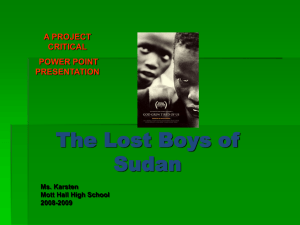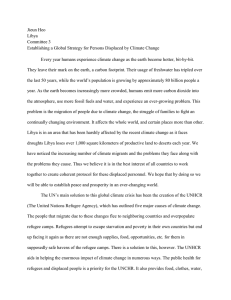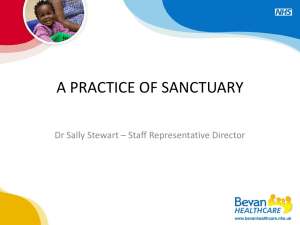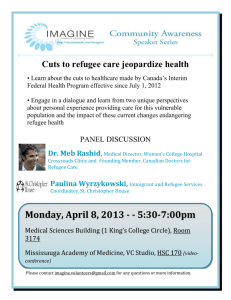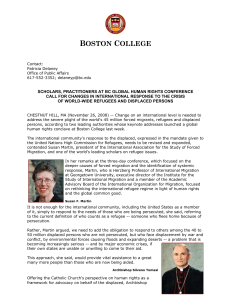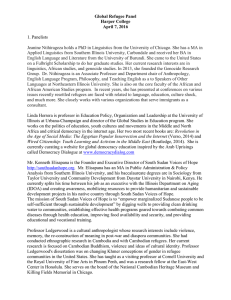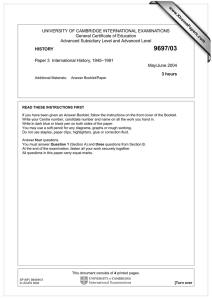Forced Migration Quiz - Social Psychology Network
advertisement
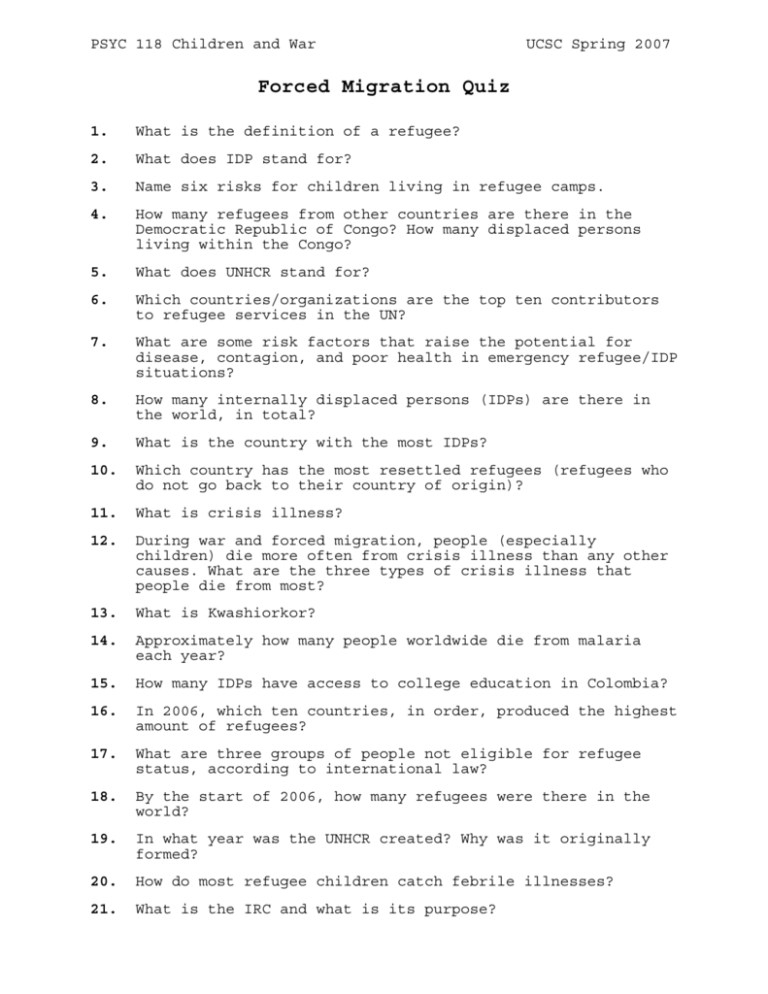
PSYC 118 Children and War UCSC Spring 2007 Forced Migration Quiz 1. What is the definition of a refugee? 2. What does IDP stand for? 3. Name six risks for children living in refugee camps. 4. How many refugees from other countries are there in the Democratic Republic of Congo? How many displaced persons living within the Congo? 5. What does UNHCR stand for? 6. Which countries/organizations are the top ten contributors to refugee services in the UN? 7. What are some risk factors that raise the potential for disease, contagion, and poor health in emergency refugee/IDP situations? 8. How many internally displaced persons (IDPs) are there in the world, in total? 9. What is the country with the most IDPs? 10. Which country has the most resettled refugees (refugees who do not go back to their country of origin)? 11. What is crisis illness? 12. During war and forced migration, people (especially children) die more often from crisis illness than any other causes. What are the three types of crisis illness that people die from most? 13. What is Kwashiorkor? 14. Approximately how many people worldwide die from malaria each year? 15. How many IDPs have access to college education in Colombia? 16. In 2006, which ten countries, in order, produced the highest amount of refugees? 17. What are three groups of people not eligible for refugee status, according to international law? 18. By the start of 2006, how many refugees were there in the world? 19. In what year was the UNHCR created? Why was it originally formed? 20. How do most refugee children catch febrile illnesses? 21. What is the IRC and what is its purpose? Forced Migration Quiz – Answers 1. A person who has had to forcibly migrate outside of their country. 2. Internally Displaced Person. People forced or obliged to flee or leave their homes, but who have not crossed a state border. 3. Sex and gender based violence, lack of proper schooling, potential of being recruited into the armed forces, malnutrition, poor protection, higher risk of disease. 4. 440,000; IDPs in Congo- 1.1- 2 million 5. United Nations High Commissioner for Refugees. 6. USA, Japan, European Commission, Sweden, Netherlands, Norway, United Kingdom, Denmark, Germany, Canada. United Nations High Commissioner for Refugees (UNHCR) 7. Acute respiratory infections, inadequate shelter, poor ventilation, poor health care services, malnutrition, overcrowding, cold weather. 8. 20 to 25 million. 9. Colombia, with 2,000,000 displaced. 10. The United States of America. 11. Illness and contagion resulting from the infrastructure breakdown associated with war, displacement, and complex emergencies. This problem arises often in refugee situations. 12. Febrile illnesses, respiratory illnesses, and malnutrition. 13. People who are forced to migrate may not have adequate food resources, which could lead to a severe form of malnutrition caused by lack of protein This is called Kwashiokor. Symptoms include reddening or discoloration of skin, retarded growth, changes in pigmentation, anemia and potbelly. 14. Anywhere from 700,000 to 2.7 million people. 15. 10% 16. Afghanistan, Sudan, Burundi, Democratic Republic of Congo, Somalia, Vietnam, Palestine, Iraq, Azerbaijan, Liberia. 17. Draft evaders, war criminals, and soldiers (former soldiers may qualify). 18. 20.8 million. 19. 1951. Was formed to address the Palestinian refugee problem. 20. By drinking bad water full of bacteria. 21. IRC stands for International Rescue Committee. It is the world's major UN contractor for refugees and displaced people. It assists people who are fleeing ethnic and religious persecution, famine, war, natural disasters, etc.



